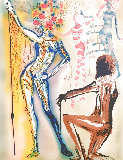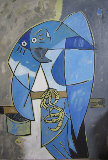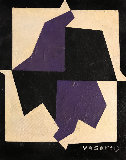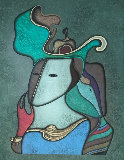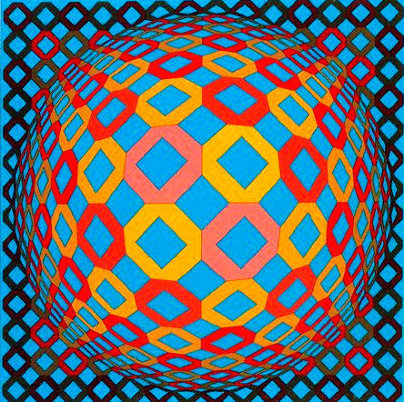






Raging Bull Medallion Terracotta Sculpture 1949 2 in
Pablo Picasso
Sculpture : Unglazed Terracotta Circular Medallion
Size : 2x2 x1 in | 5x5 x3 cm
Edition : From the Unnumbered Edition of 500
Reduced
-
🔥Small Terracota Sculpture Medallion $$$$$$$
Year1949
Foundry Signature w/ StampStamped on Back “Madoura Empreinte Originale De Picassoâ€
Condition Excellent
Purchased fromAuction House 2023
Provenance / HistoryCreated in the Madoura Pottery workshop in Vallauris, France. Signed by the stamp of Picasso and Madoura workshop, Vallauris. Catalogue raisonné of Picasso ceramics, Alain Ramié n°94
Story / Additional InfoThe iconic image of the bull, so prevalent in the work in all mediums of Pablo Picasso. The bull and bullfights were images that Picasso returned to again and again throughout his lifetime.
Certificate of AuthenticityArt Brokerage
LID164504
Pablo Picasso - Spain
Art Brokerage: Park West Artist: Pablo Picasso Blue Chip Spanish Artist: Pablo Picasso was one of the most influential artists of the 20th century. His ingenious use of form, color, and perspective profoundly impacted later generations of painters, including Willem de Kooning and David Hockney. "There are artists who transform the sun into a yellow spot, but there are others who, thanks to their art and intelligence, transform a yellow spot into the sun," he once said. Born Pablo Diego José Francisco de Paula Juan Nepomuceno Crispín Crispiniano María de los Remedios de la Santísima Trinidad Ruiz Picasso on October 25, 1881 in Málaga, Spain, his prodigious talent was cultivated early on by his father the painter Jose Ruíz Blasco. Picasso went on to attend the Royal Academy of San Fernando in Madrid, and lived for a time in Barcelona before settling in Paris in 1904. Immersed in the avant-garde circles of Gertrude Stein, he rapidly transitioned from Neo-Impressionism through the Blue Period and Rose Period, before reaching a culmination in his masterpiece Les Demoiselles d'Avignon (1907). Constantly in search of pictorial solutions and in dialogue with his friend Georges Braque, Picasso melded forms he saw in African sculpture with the multiple perspectives he gleaned from Paul Cézanne, to produce Cubism. Not limited to painting, the artist also expressed himself through collage, sculpture, and ceramics. Having been deeply affected by the ongoing Spanish Civil War, Picasso created what is arguably his most overtly political work Guernica (1937), a mural-sized painting depicting carnage with jagged shapes and contrasting grayscale. The artist was prolific up until his death on April 8, 1973 in Mougins, France. Today, his works are held in the collections of The Museum of Modern Art in New York, the Tate Gallery in London, the Hermitage Museum in St. Petersburg, as well as institutions devoted solely to his life work, such as the Museo Picasso Málaga, the Museu Picasso in Barcelona, and the Musée National Picasso in Paris. Listings wanted.













